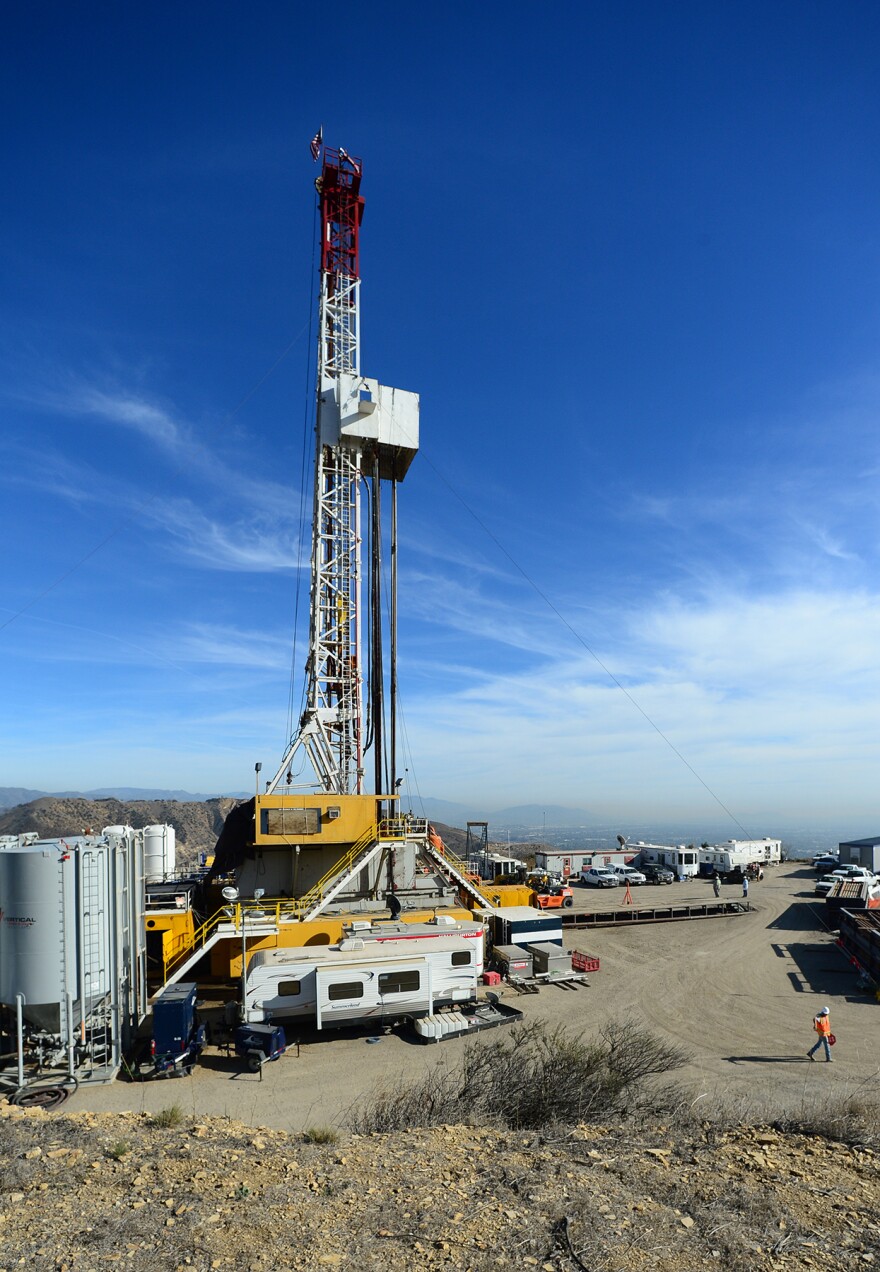With our free press under threat and federal funding for public media gone, your support matters more than ever. Help keep the LAist newsroom strong, become a monthly member or increase your support today.
Porter Ranch update: Bill lays out tests Aliso Canyon field will need to run before reopening

Southern California Gas Company has said repeatedly it hopes to resume operations at the gas storage field near Porter Ranch by late summer. The Aliso Canyon facility has been idle since a well there ruptured in October and poured methane into the atmosphere for months, forcing thousands of families out of the area.
"Our target is to have the field ready for full operation by late summer, probably late August," SoCal Gas Co. CEO Dennis Arriola said this during a conference call with investors.
A bill laying out what the gas company needs to do to resume operations has passed the Assembly and State Senate and awaits Gov. Jerry Brown's signature to become law.
The bill, SB380 by Sen. Fran Pavley (D-Agoura Hills), requires that each of the 114 wells at the Aliso Canyon storage field must pass a battery of tests or be plugged before the field can come back on line. The gas field and wells would also have to pass an inspection by the state Division of Oil, Gas and Geothermal Resources.
Southern California Gas Company hasn't been permitted to inject or withdraw since the well blowout.
In its initial draft, Pavley's bill required all wells to pass six tests before the field could resume injections and withdrawals of natural gas. It was opposed by a number of businesses.
The Assembly amended the bill in February to create a two-tiered process, where all wells get two basic tests, and only those wells that would be used for gas injection or withdrawal would get four more extensive tests.
The tests are based, in part, on advice from scientists at the Lawrence Livermore National Laboratory. Julio Friedmann, an energy engineer at the lab, said it's not unrealistic for SoCal Gas to complete the necessary testing by summer's end.
"There is no missing technology. There is nothing that needs to be invented," Friedmann said. "The bottom line is that yes, it's feasible to make these changes."
While the work can be slow, and requires big oil rigs to pull strings of pipes out of the ground, it is something that can move along at a predictable pace.
"Southern California Gas understands the number of wells they have to analyze and remediate. They understand the number of rigs and technology options that are available to them, and they understand what parts can be brought up into service in what time frame," Friedmann said.
For that reason, he expects SoCal Gas to be capable of getting through the necessary tests.
When and how the Aliso Canyon storage field resumes operations matters to Southern Californians because state energy regulators have warned that power outages could occur this summer if the continued shutdown of the gas field leads to a shortage of fuel for gas-fired power plants.
The two quick and basic tests that all wells must undergo measure temperature and noise readings through instruments lowered into the wells' bore holes. Any well that fails either of these tests must be plugged, at least temporarily.
Any well that the gas company wants to use to move gas in and out of must pass four more tests. These are more extensive tests and require the erection of large rigs atop the wells to pull the center well tubes out for inspection. The gas company has about eight to ten of those big rigs on site. Completing the tests in this second phase can take weeks to accomplish.
SoCal Gas has said it is focusing the more extensive tests on the newer wells that are likely to be in the best condition.
In theory, the company could bring the field back online by putting a small number of its best wells through the extensive series of tests while idling the rest of the wells that undergo the more basic tests.
Wells that SoCal Gas does not need or want to bring back online immediately can be kept idle for up to a year before they must pass the four additional tests, said Briana Mordick, senior scientist for the Natural Resources Defense Council.
"The speed at which they can bring the field back online depends on how many wells they plan to put through that full battery of tests versus how many they plan to just leave idle," Mordick said.
The Aliso Canyon gas field is the second largest in the Western United States, and it is used to regulate the supply and pressure of gas in the Los Angeles and Orange County area. It banks supplies of extra gas when the daily demand exceeds what can be put into the pipe by suppliers.
SoCal Gas also uses the field to store the gas supplies purchased from out-of-state producers by power generators including Los Angeles Department of Water and Power, and smaller energy producers in cities like Long Beach and Burbank.
Because power plants are not direct customers of SoCal Gas, state rules permit their gas supply to be cut off or reduced during times of shortage.
Normally, Southern California Gas Company would fill the underground gas field with as much as 86 billion cubic feet of gas over the summer when gas costs less, and sell the gas over the winter when it's mostly needed to meet home heating demands. That process helps stabilize the price of gas to customers, the company says.
The uncontrolled leak bled the gas field down to 15 billion cubic feet of gas storage, which is about what the L.A./Orange County region would use over three to four days of peak demand.








